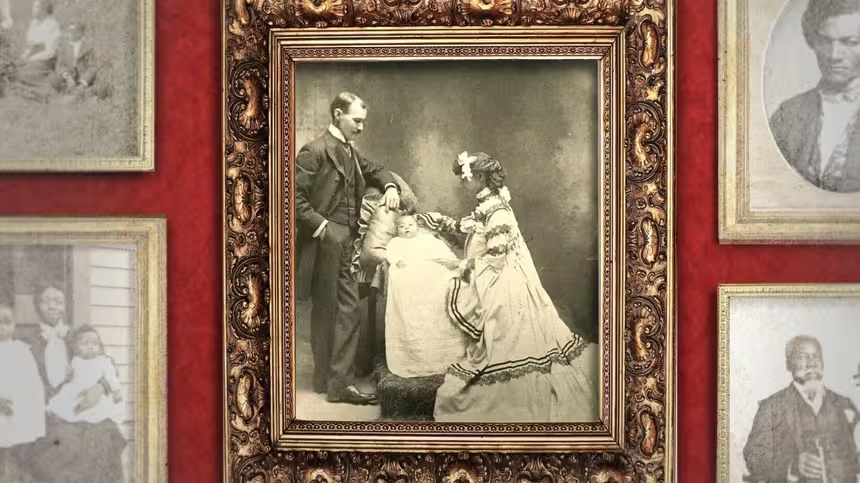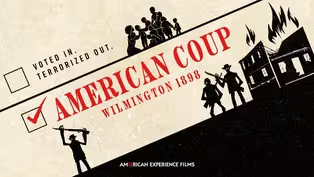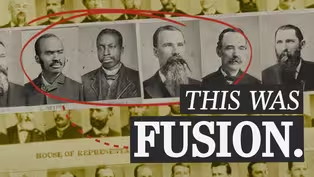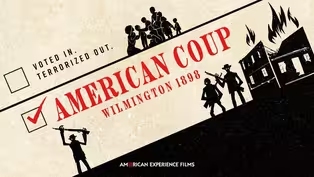
When is a photo an act of resistance?
Clip: Season 36 Episode 7 | 2m 58sVideo has Closed Captions
Beautiful, intimate photographs of a society in the crosshairs of white supremacy.
For families that just decades earlier were torn apart by chattel slavery, being photographed together was proof of their resilience.
Problems playing video? | Closed Captioning Feedback
Problems playing video? | Closed Captioning Feedback
Corporate sponsorship for American Experience is provided by Liberty Mutual Insurance and Carlisle Companies. Major funding by the Alfred P. Sloan Foundation.

When is a photo an act of resistance?
Clip: Season 36 Episode 7 | 2m 58sVideo has Closed Captions
For families that just decades earlier were torn apart by chattel slavery, being photographed together was proof of their resilience.
Problems playing video? | Closed Captioning Feedback
How to Watch American Experience
American Experience is available to stream on pbs.org and the free PBS App, available on iPhone, Apple TV, Android TV, Android smartphones, Amazon Fire TV, Amazon Fire Tablet, Roku, Samsung Smart TV, and Vizio.
Buy Now

When is a photo an act of resistance?
For families that just decades earlier were torn apart by chattel slavery, being photographed together was proof of their resilience.Providing Support for PBS.org
Learn Moreabout PBS online sponsorshipWhen does a photo become an act of resistance?
This tranquil studio portrait of Alex and Carrie Manly and their infant son, Milo, doesn't look defiant.
But its very existence flies in the face of a white supremacy campaign that nearly cost Alex his life.
Five years before this photo was taken, in 1898, Alex was the editor and publisher of The Wilmington Daily Record, a newspaper in Wilmington, North Carolina.
It was a publication “of the Negro, for the Negro, and by the Negro.
Representing African American life was Alex's mission.
And during Reconstruction, Wilmington was a place where Blacks were thriving.
But at the same time Alex was putting out The Record, other North Carolina newspapers were promoting a very different version of Blackness.
The Raleigh News and Observer was the largest and most powerful newspaper in the state.
Its publisher Josephus Daniels was working with a cartoonist to create racist propaganda.
These images depicted African Americans as clownish... ...and dangerous.
And showing them as inferior justified not only denying Blacks rights, but built a case for violence against them.
That violence came looking for Alex in November, 1898.
Wilmington's white leadership and an estimated 1000 citizens met and demanded that Alex shut down The Daily Record and leave town.
More than 450 men signed a petition in support of his banishment.
Outrage grew at the meeting, with calls for Manly to be lynched.
A friend warned Alex and he escaped with his life.
But The Daily Record was destroyed by a white supremacist mob that took proud photos in front of the ruins.
Alex reunited with Carrie in Washington, D.C., and the couple eventually moved to Philadelphia, where they had their first son, Milo.
So when the family went to a portrait studio in 1903 to pose for this photo, it was an act of celebration, and quiet defiance.
Other African Americans in the late 19th century took pictures for the same reasons to keep a record of what theyd achieved in the short time since Emancipation.
For families that just decades earlier were regularly torn apart by chattel slavery, being photographed together was proof of their resilience.
In these images, they could authentically reflect their own lives, unlike the caricatures that robbed them of their humanity.
While Manly never again owned a newspaper, he continued fighting for the dignity of African Americans.
“The negro is passing through a crucial part of his history,” Alex said in a speech after his close brush with death.
“And still he will sing ‘My Country, ‘Tis of Thee.” To learn more watch American Coup, Wilmington, 1898 from American Experience.
Chapter 1 | American Coup: Wilmington 1898
Video has Closed Captions
Preview: S36 Ep7 | 8m 24s | Watch a preview of American Coup: Wilmington 1898 (8m 24s)
The coalition that challenged white supremacy in the Old South.
Video has Closed Captions
Clip: S36 Ep7 | 3m 32s | Just decades after the Civil War, a multi-racial political alliance won control of North Carolina. (3m 32s)
Trailer | American Coup: Wilmington 1898
Video has Closed Captions
Preview: S36 Ep7 | 2m | The little-known story of the deadly 1898 race massacre and coup d’etat in Wilmington, NC. (2m)
Providing Support for PBS.org
Learn Moreabout PBS online sponsorshipSupport for PBS provided by:
Corporate sponsorship for American Experience is provided by Liberty Mutual Insurance and Carlisle Companies. Major funding by the Alfred P. Sloan Foundation.




















